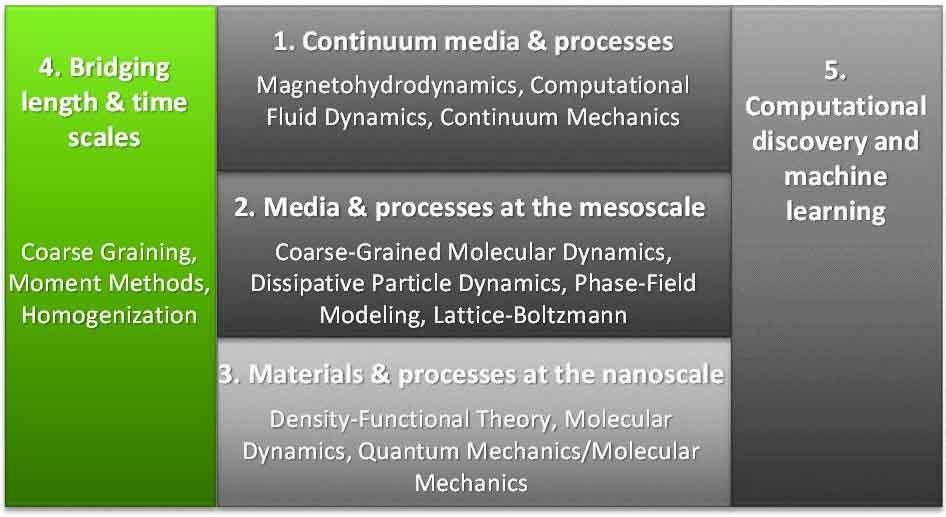This research line is set up to guarantee that the scale-related research lines 1-3 truly get connected, which is necessary for creating breakthroughs.
In this research line, we are developing new ideas to realize the bridging of length and time scales, and new computer codes will be constructed to implement these ideas. In Fusion research such bridging of length and time scales is absolutely necessary, since in the ITER Tokamak reactor that is presently under construction a real-time prediction of the plasma behavior will be necessary in order to control the plasma ‘on-the-fly’. Much progress in this direction has recently been made in a collaboration between DIFFER and Mechanical Engineering, where in a two-step method information is distilled from kinetic codes and fed into a fast code called RAPTOR (RApid Plasma Transport simulatOR).
Research that also fits in this research line encompasses:
- coarse-graining methods in MD simulations, such as ‘united-atom’ models,
- the momentum method in combination with adaptive finite-element methods to solve kinetic equations,
- mesoscale simulation techniques in combination with a macroscale continuum approaches as used in the description of multiphase and multicomponent systems (DPD), and
- upscaling of the (multiphase) creeping flow in porous media to continuum (Darcy) scales.



